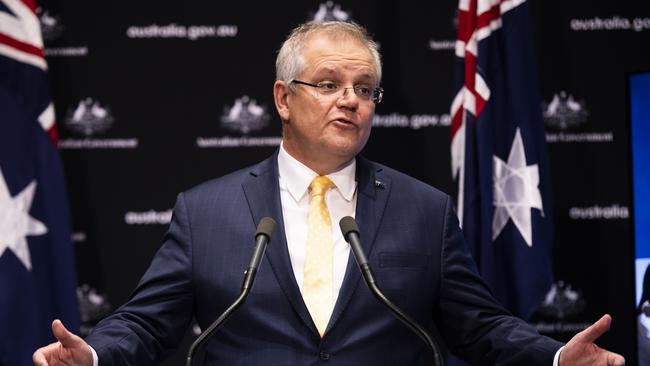Coronavirus: Crisis has exposed our neglect of R&D investment

This pandemic has made it impossible to conceal dangerous weaknesses in the Australian economy that the Morrison government previously preferred to ignore.
The greatest of these are the decline in manufacturing, the attrition of our science and research resources, and the loss of jobs, skills and economic complexity resulting from both.
Fixing these requires more than procurement contracts for a handful of firms producing ventilators and personal protective equipment. Australia must build sovereign capabilities in strategic areas of advanced manufacturing, including the processing of agricultural products and our oil and gas resources.
That will mean reconsidering our dependence on fragile global supply chains, rather than focusing only on the assembly of finished products in short supply.
All of that, in turn, means that we must stimulate investment in research and innovation. In this respect, however, Australia is going backwards.
In 2018 the government introduced a bill to cut the most important measure linking the taxation and innovation systems, the Research and Development Tax Incentive. The bill was opposed by most major stakeholders, especially the large manufacturing firms that conduct most private sector R&D. They warned it would drive much R&D offshore.
A Senate inquiry agreed, and urged the government to withdraw the bill for further consultation. The bill lapsed when parliament was dissolved for the election, but a new bill, essentially the same, has been introduced.
Do not mistake the gravity of the situation. At Senate estimates, the Industry Department conceded that the most recently available figures, for 2017-18, showed that business expenditure on research and development had declined by more than 12 per cent since 2013.
We also know that in the same time total spending on science, research and innovation has fallen by more than $1bn — 10 per cent in real terms.
An attentive reading of the national science, research and innovation tables reveals that the 12 per cent fall in business expenditure on research and development is a massive understatement. In three years the decline in investment has fallen short of the government’s own targets for business expenditure on research and development by $5.3bn — about 30 per cent. Yet the government refuses to acknowledge the consequences of the decline.
Australia continues to fall behind in international innovation rankings. We are no longer among the top 20 innovative nations. Other comparisons are more alarming.
Harvard University produces the Economic Complexity Index, which assesses the capacity of national economies to produce unique products and services, based on trade data. Economic complexity is an effective predictor of growth, and Australia, ranked 50 on that index in 1995, dropped to 93 by 2017.
Without new investment in advanced manufacturing, we will not diversify our economic base and that will limit prospects for growth. Despite this, the government is persisting with a bill that will strip $1.8bn over four years from the biggest item in the nation’s innovation toolbox.
The R&D tax offset rate for firms with a turnover of less than $20m is generally 43.5 per cent. Under the proposed changes, the rate would be their corporate tax rate plus 13.5 per cent, capped at $4m a year. For these firms, which make up 80 per cent of the 14,244 that are registered for the incentive, the R&D offset amount is fully refundable. For firms with a turnover of more than $20m, the R&D tax offset is non-refundable and at present the rate is 38.5 per cent. Under the changes, the offset rate would be their corporate tax rate plus a tiered premium based on their R&D intensity.
These cost-cutting changes don’t just complicate the program, they make it impossible for the incentive to function as intended by stimulating investment in R&D.
Worse, the government has ignored a recommendation for genuine reform contained in the so-called Three Fs review of the innovation system in 2016.
This proposed a premium rate of the incentive to be claimed by firms conducting R&D in collaboration with universities and research agencies — a cultural change and an investment in solving real problems.
A collaboration premium would put the economy on track for increased innovation and more effective commercialisation, creating jobs and industries.
It would also boost the university sector, whose revenue from international students has drained away during the pandemic.
If we’re to thrive in the post-pandemic world, the government must adopt measures that will increase investment in R&D, and it should start by looking again at the collaboration premium.
If it proceeds with the cuts, the availability of a better alternative across the Tasman might well lure firms already considering moving R&D offshore.
In New Zealand, all firms can claim a more genrous tax offset for investment in R&D.
We must choose a better path now, as a matter of urgency. The livelihoods — and the lives — of all Australians depend on getting the choices right.
Kim Carr is a Labor senator for Victoria and a former minister for industry, innovation, science and research.


